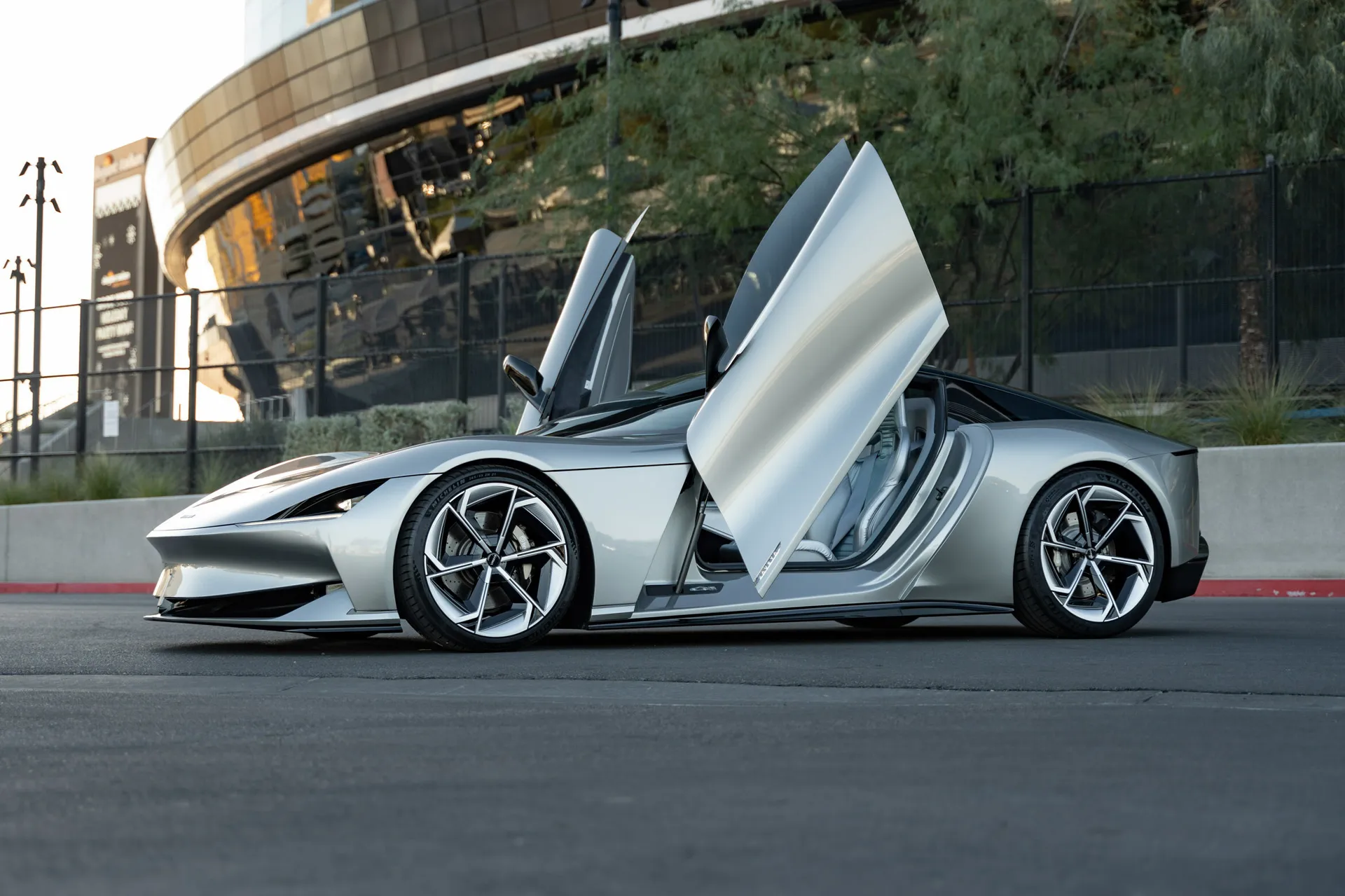California’s Karma Automotive has revealed two new designs for fully electric vehicles, as part of a revamped portfolio for the brand.
Karma says that as part of an effort “reintroducing the Karma brand,” it plans a flagship fully electric coupe called Kaveya, boasting all-wheel drive, scissor doors, and more than 1,000 hp in its top version, with a targeted top speed of more than 180 mph. While that model won’t arrive until 2026, Karma also showed the Gyesera, a rear-wheel-drive, fully electric sedan that the company claims is coming in Q4 2024.
The Gyesera is about 200 inches long—the same length as the Revero—so a bit longer than the Tesla Model S, Lucid Air, or Mercedes-Benz EQS. Karma claims that it will be built on an aluminum space frame, with carbon fiber and aluminum body panels.
In its pivot, Karma is instead focusing on “low, long, and fast vehicles that compare to any high-end European brand.”
That’s according to Michelle Christensen, who recently joined Karma and had led the 2017 remake of the Acura NSX hybrid supercar.
The plan marks a return for Karma to something closer to its original approach, focused first around a revamped version of the Fisker Karma, called the Revero, then a sleek luxury SUV, followed by a luxury coupe, which had been teased as the Vision concept.
Karma started nearly ten years ago with the purchase of the remains of the previous Fisker Automotive by Chinese parts supplier Wanxiang Group. Since then, it’s slowly evolved into a U.S.-based EV brand, albeit with a number of proposed products that simply haven’t shown up.
Things started to change in 2020, when Karma boasted that a 400-mile Karma Revero EV, then to be called the GTE, was on the way. In 2021 Karma announced that it planned to test a hydrogen fuel-cell car, and it confirmed that a GX SUV was also in the works and due to be fully revealed in 2022.
Karma a short time later claimed to be developing two different platforms, with one of them due to underpin an all-electric pickup and SUV. The other platform, an evolution of what the company called EREV (a continued development of the series-hybrid powertrain originally from Quantum Technologies for military vehicles) also made good sense for electrifying commercial trucks, it argued.
In a 2012 Fisker Karma review, as an EV the Karma showed to be only about half as efficient as the Chevy Volt, which at the time attempted to bridge the same gap between plugging in and going electric but with a mechanical workaround. In a 2021 Karma GS-6 review, it also outdid its 61-mile EPA electric range rating; its BMW 1.5-liter turbo-3 engine was also a big improvement.
Now, after a name change to GS-6, it appears that Karma has brought back the Revero name as well. Green Car Reports has reached out regarding this and the future of the series-hybrid system in Karma’s lineup.










